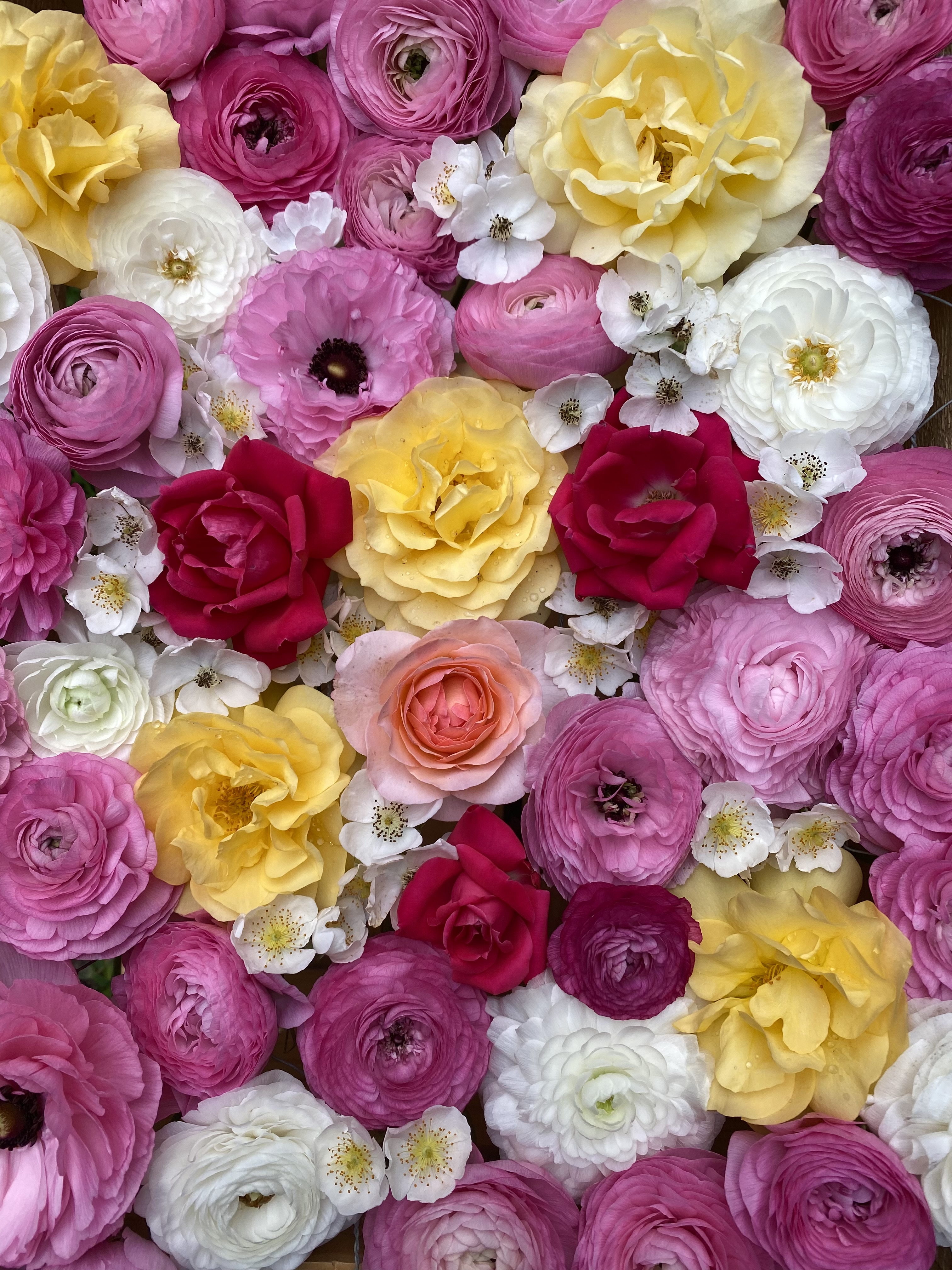How to Dig and Store Dahlia Tubers
Sep 26th 2022
My first year growing dahlias was a blast, but I remember being so anxious about storing my tubers over the winter. Especially as a flower farmer, I made a huge investment in buying a ton of tubers so there was a lot of pressure financially on storing them correctly to make it through our cold winters. Well, I'm hear to tell you that storing them is actually pretty easy! They are picky about the conditions you store them in, but once you find that sweet spot of temp/humidity, you can leave them there until they're ready to plant again come spring!
Side note: I need to dig up my dahlia tubers as I live in zone 6b (where the tubers wouldn't make it over the winter). Some zones (like 8-10) don't need to worry about digging up their tubers! Dahlias may overwinter in zones 6-7 if there is added insulation to help them survive, however I don't recommend it.
STEP ONE: Wait until frost! (or like we flower farmers call it, Frostmas!)
Although not necessary to wait until frost, dahlias do need to be in the ground at least 120 days for the tubers to form. If you haven't received a frost by early November, you can pull them with no harm done!

STEP TWO: Cut them all down and dig them up!
First things first, you're going to need to cut the foliage back, so that a foot of the stem remains above ground. I like to use the stem as leverage when pulling them out of the ground. Next use a pitchfork or shovel as to dig the tuber clumps up. Just make sure to dig wide enough from the base of the plant so you don't chop those tubers in half! I dig about a 12-18 inches out from the center of the plant.
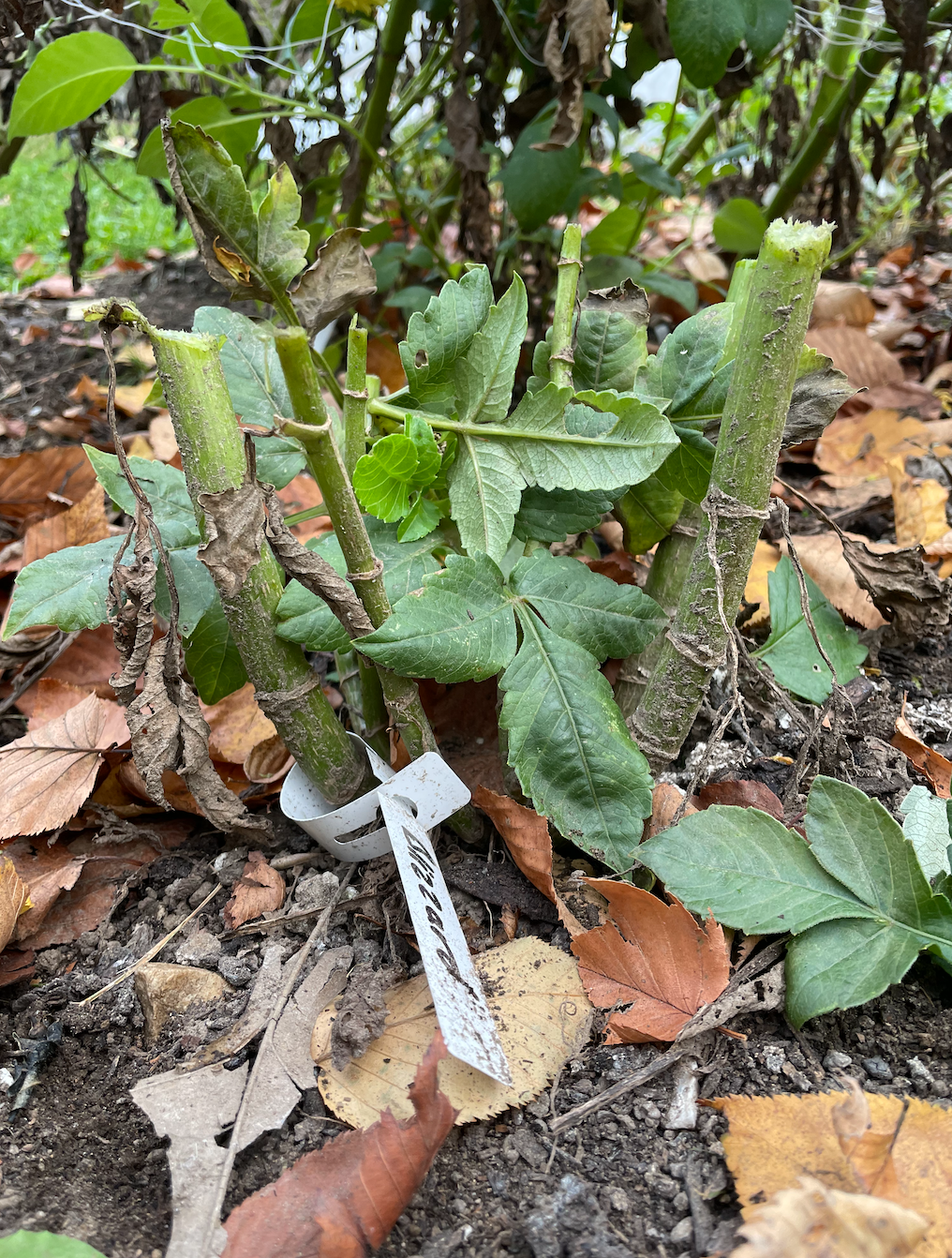
One important thing to note is to always dip your trimmers into a bucket of diluted bleach in between each dahlia plant that you chop down! It may seem tedious, but this prevents spreading any diseases that may be on one plant to all of them.
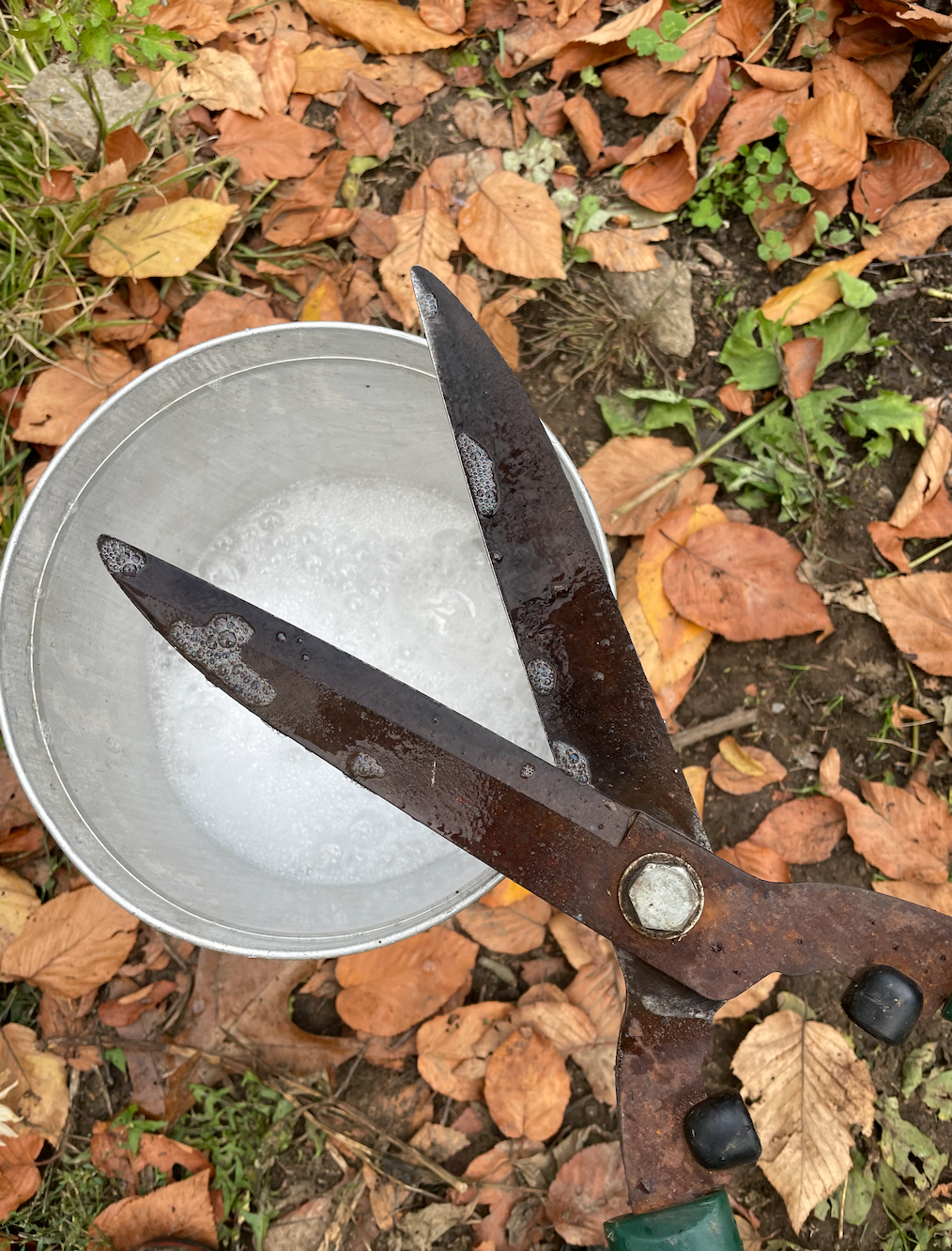
Once you've dug the tuber up, gently shake up the dirt. Next, rise off the tuber clump, make sure not to puncture the tubers or get water down the stems as this will cause tuber rot over the winter months. Once all the dirt is removed, allow the tubers dry somewhere out of direct sunlight for about a week. A mistake I made during my first growing season was not waiting to store them before they dried.. I ended up with a lot of mushy tubers come spring.
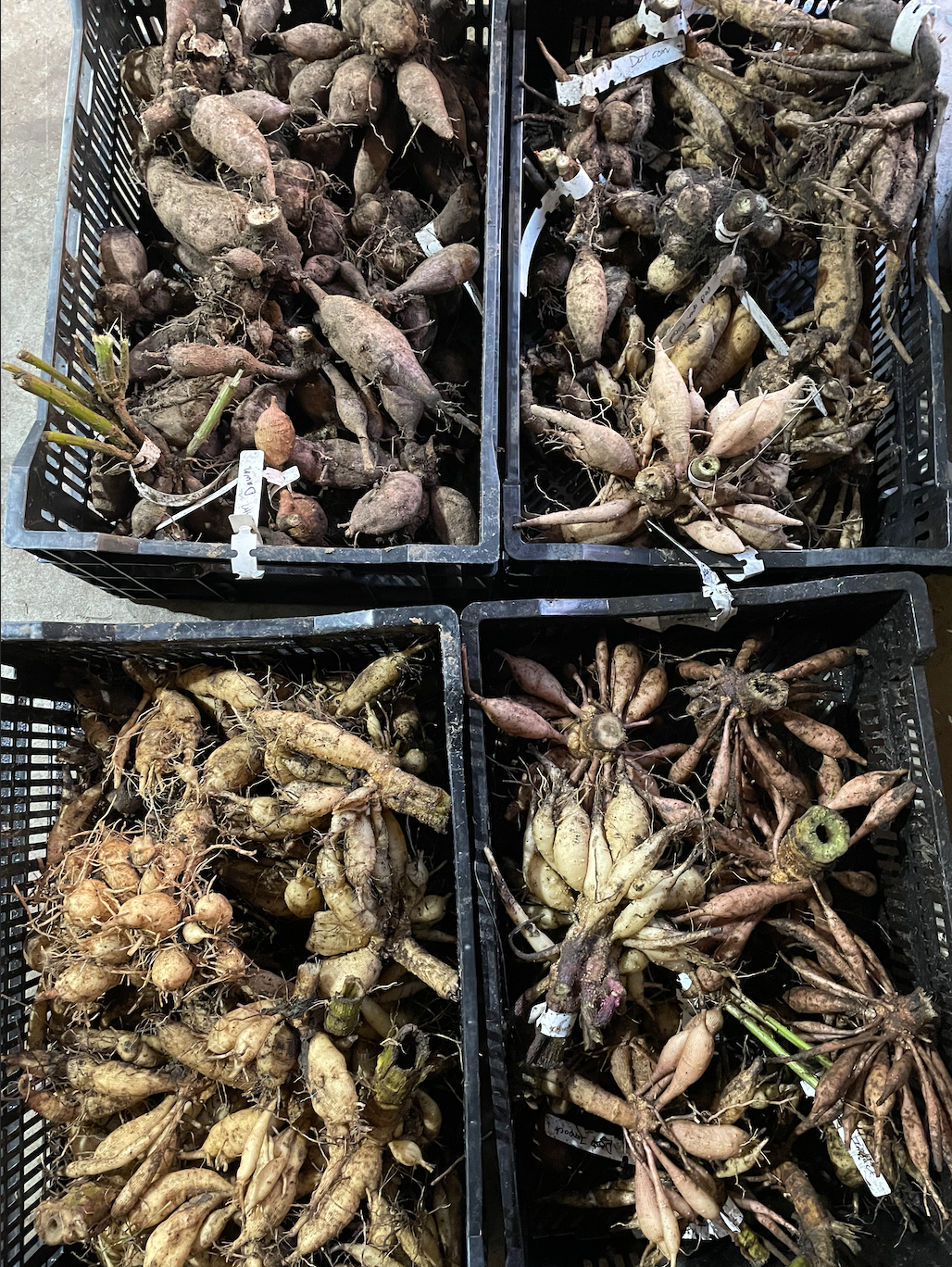
STEP THREE: Dividing the dahlias!
This step can either be done in the fall or the spring. Wash clumps and allow them to dry overnight or just brush off excess dirt with a paintbrush (this works best for light sandy soil. If you grow in heavy clay, you will need to wash them). Divide the clumps into individual tubers (read blog on how properly divide dahlias). Allow cut ends on tubers to dry and cure, about 2-3 days. Remember: ONLY tubers with “eyes” are viable!
Store tubers in bins/boxes filled with vermiculite, peat moss, or wood shavings. Be sure that they are not touching each other! Fill the bin with about 1-2 inches of storage material and carefully place the tubers so they are not touching. Sprinkle another 2 inches of storage material on top and add another layer of tubers, and so on. They can also be wrapped in newspaper to prevent touching.
The most important thing to remember is to store tubers at 40-50 degrees Fahrenheit, with about 70% humidity. Too low of humidity and the tubers will shrivel, too high and they'll become mush! With temps, too low and they'll freeze and become mush, too high and they'll wake up and start sprouting!
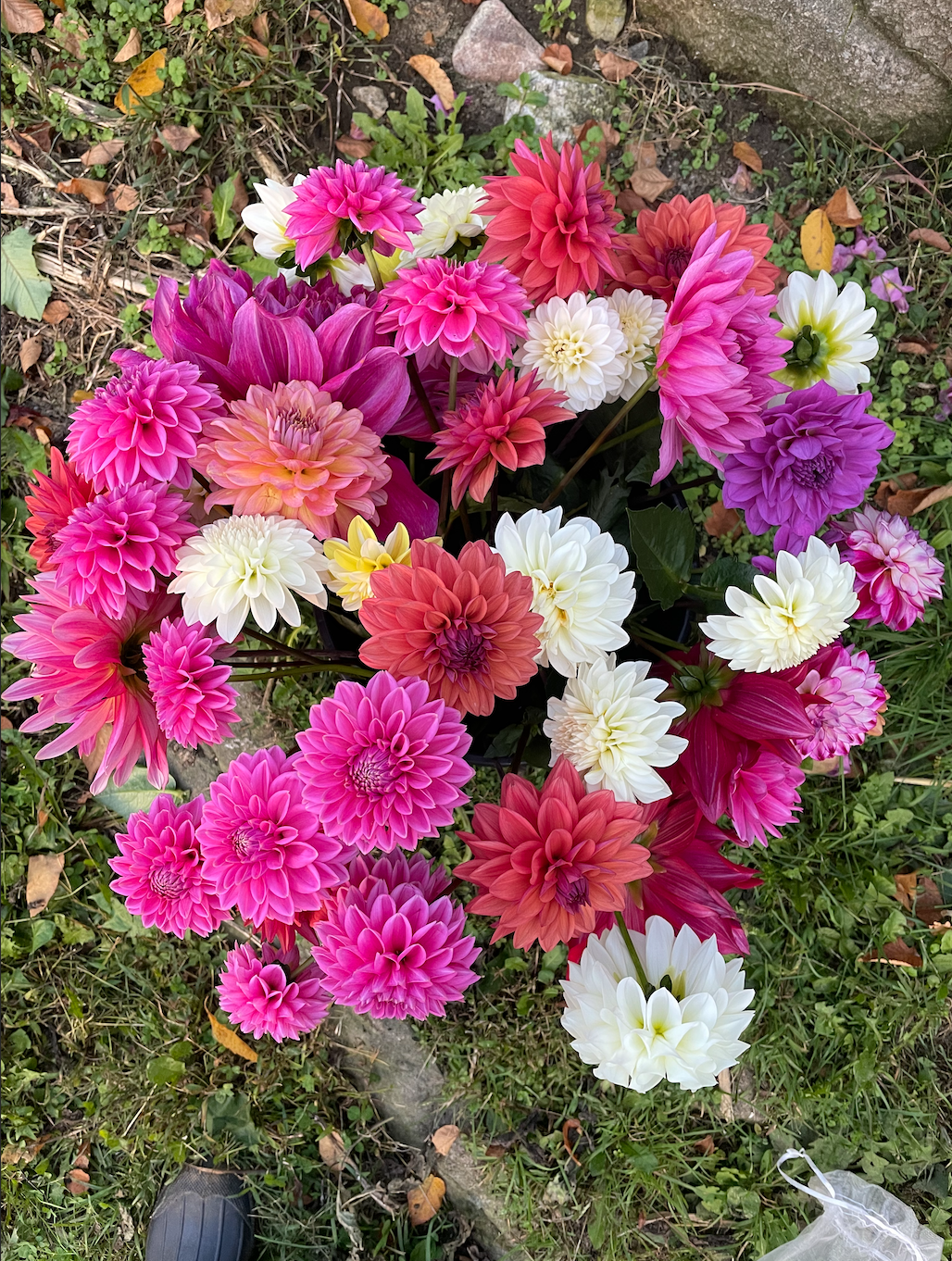
STEP FOUR: Check on your tubers!
Check on your tubers every few weeks. Discard any rotted, mushy tubers. Mush is not good. If the tubers looks shriveled and dry, don’t toss them - move them to a more humid location. I’ve seen the most terrible dead-looking tubers come back to life in the spring. Once in a while our tubers develop small amount of mold. Don’t panic. It means your spot is too humid. Move them to a drier spot and simply brush off or wipe off the mold.
WHERE TO STORE TUBERS??
Currently, we store them at my parent’s house, in their garage. This garage is unheated, but stays right around 40 degrees all winter. The garage acts like a root cellar and is quite humid.
